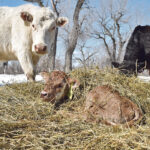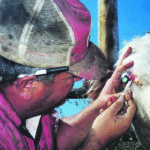The third eyelid is a common area for cancer in cattle, which can be removed surgically if found early enough
Cancer eye, formally known as bovine ocular squamous cell carcinoma, is the most common type of cancer in cattle. About 80 percent of tumours reported at slaughter are related to the eye and they are a leading cause of carcass condemnation at packing plants. Cancer eye causes significant economic loss to cattle producers due to […] Read moreTag Archives Cattle Connect — page 9
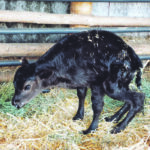
Inbreeding raises risk of genetic problems
Certain genetics can be tested for and managed rather than be completely removed from the breeding population
There are many undesirable genetic conditions in cattle, including dwarfism, hairlessness and edema. Some problems are inherited as dominant traits passed by one parent and some are recessive but received from both parents. A recessive trait can hide in each carrier parent, only appearing in calves if doubled up. Risk of genetic problems rises with […] Read more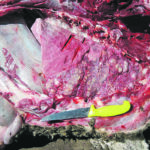
Mycoplasma bovis major threat for feedlots
About 40 percent of animals infected with M. bovis in the feedlot either die or are in the chronic pen and euthanized
Mycoplasma bovis is a bacterium that affects cattle and bison. In cattle, it can cause mastitis, arthritis and pneumonia. Not all infected animals get sick, however. Some just shed bacteria without signs. Dr. Jennifer Davies, pathologist and director of the diagnostic lab at the University of Calgary, said it can affect all age groups of […] Read more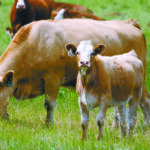
Change in diet can produce respiratory problems
Acute bovine pulmonary edema and emphysema are two lung conditions that can occur with sudden pasture changes
Acute bovine pulmonary edema and emphysema can occur when animals are suddenly changed from dry pastures to lush green ones or from dry hay to healthy pasture. Dr. Nathan Erickson of the Western College of Veterinary Medicine at the University of Saskatchewan said problems arise from metabolism of certain proteins, when toxic products end up […] Read more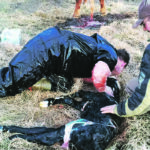
Newborn calves sometimes need CPR
Calves that aren’t breathing need their airways cleared and extra encouragement; artificial respiration is a last resort
In a normal, easy birth, the calf starts breathing as soon as the umbilical cord breaks and its face and nose are uncovered. But sometimes after a hard birth, the calf goes too long without oxygen and doesn’t start to breathe. If the cord started to detach during birth, it will die unless it starts […] Read more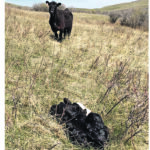
Calming nervous heifers can help improve calving
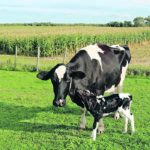
Aspirin may ease calving stress in dairy cows
Cows can experience inflammation and stress during calving, which can increase the risk of diseases such as mastitis
Aspirin could become another inflammatory medication to provide pain relief for dairy cows. A year-long American research study found cows that received a short course of acetylsalicylic acid (Aspirin or ASA) after calving had lower metabolic stress and produced more milk than untreated cows. “It’s sort of a cutting-edge strategy to decrease inflammation after calving,” […] Read more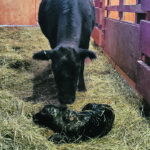
More cattle producers opt for later calving season
There are many good reasons why later calving makes sense, but it can be challenging in dry years when pastures are of poorer quality
Deciding on the appropriate calving season for any given operation involves consideration of many factors. Whether it’s early calving in January-February, spring calving in March-April, births in the summer months or even fall, the choice hinges on climate, marketing goals, feed costs and availability, breeding season challenges and management constraints. Each producer must weigh pros […] Read more
Good records can help better track the herd
Most producers keep some kind of records, but surveys find that the more complicated the system gets, the less they tend to be used
The calving booklet in the back pocket, which grows tattered as more calves hit the ground, has given way to smartphone and electronic options. That should allow cattle producers to extract more useful production data and potentially establish some benchmarks, said Kathy Larson, research associate in agriculture and resource economics at the University of Saskatchewan. […] Read more